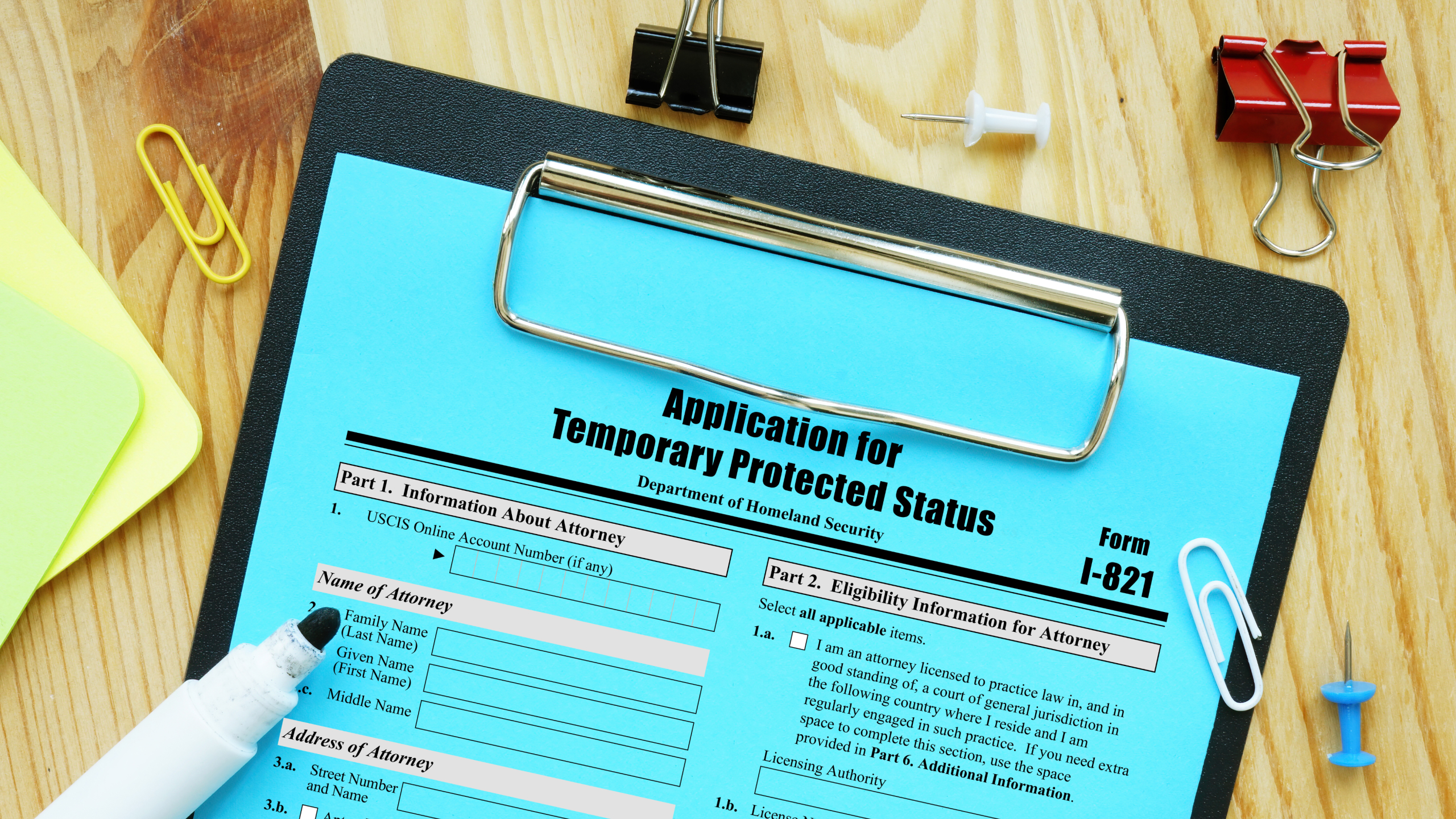TPS: What Is Temporary Protected Status?
Am I Eligible for TPS?

Temporary protected status (TPS) is a life-saving temporary immigration solution designed to help people who cannot return to their home country.
If granted a TPS designation, foreign nationals such as Haitians, Hondurans, and Salvadorans can stay in the United States for an extended period of time until it’s safe for them to return home. Here’s what you need to know about how TPS works and how to apply for TPS.
What Is Temporary Protected Status?
Created by the U.S. Congress in the Immigration Act of 1990, temporary protected status acts like a long-term non-immigrant visa for people affected by certain circumstances. TPS beneficiaries can live in the United States in a way that’s similar to how documented immigrants live for the duration of their TPS status. TPS holders are authorized to work and can even obtain permission to travel outside the U.S. and return.
What Are the Benefits of Temporary Protected Status?
Temporary protected status offers many of the same benefits as an immigrant visa, but the benefits come with an expiration date.
You’re Safe
The most significant benefit of TPS is your safety. TPS holders won’t have to return to a dangerous or hostile environment. TPS is designed to save the lives of people impacted by emergencies, unrest, or violence.
You Cannot Be Deported
Recipients of TPS cannot face deportation back to their home country as long as they continue to follow the law and keep their TPS registration current. You cannot be detained by the Department of Homeland Security (DHS) in relation to your immigration status unless you pose a danger to the public or national security.
You’re Allowed To Work in the United States
TPS can be granted long-term. During that time, you’ll need to be able to support yourself. Recipients of TPS can be issued an Employment Authorization Document (EAD), also known as a work permit. As soon as you have work authorization, you’re allowed to apply for jobs and work within the United States.
Why Is Temporary Protected Status Given?
Registration for temporary protected status will open up for foreign nationals from countries where U.S. Citizenship and Immigration Services(USCIS) recognizes urgent circumstances and temporary conditions that have a significant impact on human safety and human rights.
Victims of Violent Conflicts
Immigrants from countries affected by civil wars, ongoing armed conflict, or invasion by a hostile group or government (such as extremists or entities recognized as terrorists) can apply for temporary protected status. Immigrants from countries like Afghanistan, Syria, Ukraine, Somalia, South Sudan, Yemen, Venezuela, Cameroon, Ethiopia, Liberia, and Burma qualify for TPS.
People Impacted by Natural Disasters
Foreign nationals who cannot safely return to their home country due to an environmental disaster like an earthquake or a tsunami can temporarily stay in the United States until it is safe to return home. This includes immigrants from countries like Haiti, Honduras, Nicaragua, Nepal, and El Salvador.
Those Affected By Temporary Hostile Circumstances
The United States can decide to grant temporary protected status to foreign nationals from countries where temporary circumstances impact the country’s safety and the people’s ability to thrive.
Who Is Eligible for Temporary Protected Status?
Temporary protected status can only be given to people who meet all of the following criteria. You must continue to meet the criteria to maintain your TPS.
Nationals From Impacted Countries
TPS is only granted to nationals of countries from an approved list. USCIS has officially recognized conflicts, natural disasters, and hostile circumstances in over a dozen countries.
The Secretary of Homeland Security has the power to give a country TPS designation. You only qualify if are national or last habitually resided in an eligible country.
People Who File During the Registration Period
You must register for temporary protected status during your country’s designated registration period. If you want to maintain your TPS status, you need to re-register during a designated re-registration period. There may be some exceptions for people who need to file late.
You Must Continually Reside in the United States
Every eligible country has a specified effective date that indicates when nationals of those countries were eligible to apply for TPS. If the situation in that country is ongoing, USCIS will update designation dates.
You need to have been continuously physically present in the United States since the most recent designation date to qualify for the TPS, which means you can’t leave and come back.
USCIS recognizes some exceptions to the rule. If you have to temporarily leave the United States for a short period of time for reasons relating to the circumstances in your home country, the U.S. government may grant you travel authorization as an exception to the rule.
Who Isn’t Eligible for Temporary Protected Status?
If you fail to register for TPS within the specified timeframe or if you fail to renew your TPS, you have to leave the country.
If you’ve committed crimes in the United States, you may not be given TPS. If you’ve committed certain crimes in your home country, you’ll fail security clearance and be considered an inadmissible immigrant.
This also applies to people who have engaged in activity that USCIS would consider to be a terrorist activity or people who actively caused the conflict in their home country.
How Long Does Temporary Protected Status Last?
Temporary protected status is granted in blocks of time. The duration of TPS depends on what happened to cause eligibility. TPS can be granted for six months, 12 months, or 18 months with options for an extension and redesignation after that time.
Some TPS recipients are eligible to renew their temporary protected status if the circumstances in their home country worsen or are not resolved by the time their TPS is almost up.
Can I Apply for TPS If I Have an Ongoing Immigration Case?
Some immigration cases or petitions need to be handled one at a time. Temporary protected status is different. You’re allowed to apply for temporary protected status whenever you’re eligible to receive it, even if you’re currently waiting on a decision or information relating to another immigration case, such as a green card application. The two won’t interfere with each other.
You may be approved for temporary protected status before your existing immigration case has been decided. It’s important to apply for temporary protected status the moment that you need it. If it’s dangerous to return to your home country, you need to act quickly to obtain TPS to avoid having to leave the United States.
If you’re in the United States on temporary protected status, you can also apply for a different type of immigration status while your TPS is still in effect. If you’ve been in the United States on temporary protected status for a year, you may have built a life here and developed strong ties.
For example, if you wind up in a relationship with a U.S. citizen that leads to engagement or marriage, you have a valid pathway to permanent resident status in the United States. You can file for your new status as soon as you’re eligible. You don’t need to wait for your TPS to run out, and you shouldn’t wait.
How Do I Apply for Temporary Protected Status?
If you are eligible for temporary protected status, you’ll file an Application for Temporary Protected Status and pay the associated fee. Each country may have different requirements for additional paperwork that proves you were impacted by the circumstances recognized for your country’s designation. You could be required to provide additional proof.
USCIS wants to see important documents like your passport and proof of identification. It isn’t always possible for immigrants to obtain these documents. If you can’t safely return home to collect them or if they were destroyed in a disaster, you can present evidence that the information they’re requesting can’t be obtained.
You can apply for an Employment Authorization Document at the same time you apply for TPS to assure you’re approved to work in the United States as soon as your TPS is approved. It’s best to do them both simultaneously because EADs can sometimes take a while to process.
If you believe you may be inadmissible for TPS, you can request a waiver at the same time you file. This reduces your chances of being rejected for temporary protected status. USCIS will sometimes grant exceptions to keep families together.
You may need the help of an experienced immigration attorney when filing for TPS, especially because there’s a lot to be proven. It can be very difficult to navigate TPS situations where you may need to have a waiver approved at the same time. Working with a lawyer can reduce the chances that your application will be rejected.
What Should I Do After I Apply for Temporary Protected Status?
If you’re approved for temporary protected status, you can continue to live in the United States for as long as your status is valid. If you’re denied temporary protected status, you may be eligible to file an appeal. It’s best to have the assistance of a lawyer when filing an appeal.
Do You Need Help With Temporary Protected Status?
Our experienced team of immigration attorneys at Cohen, Tucker & Ades can help you and your family apply for temporary protected status if you meet eligibility requirements. We can also help you navigate situations where you need a special waiver, or you need to appeal an initial denial for TPS. Contact us to start the process.
Sources:
Temporary Protected Status | USCIS
Not sure which option is right for you? Request a confidential consultation today.

